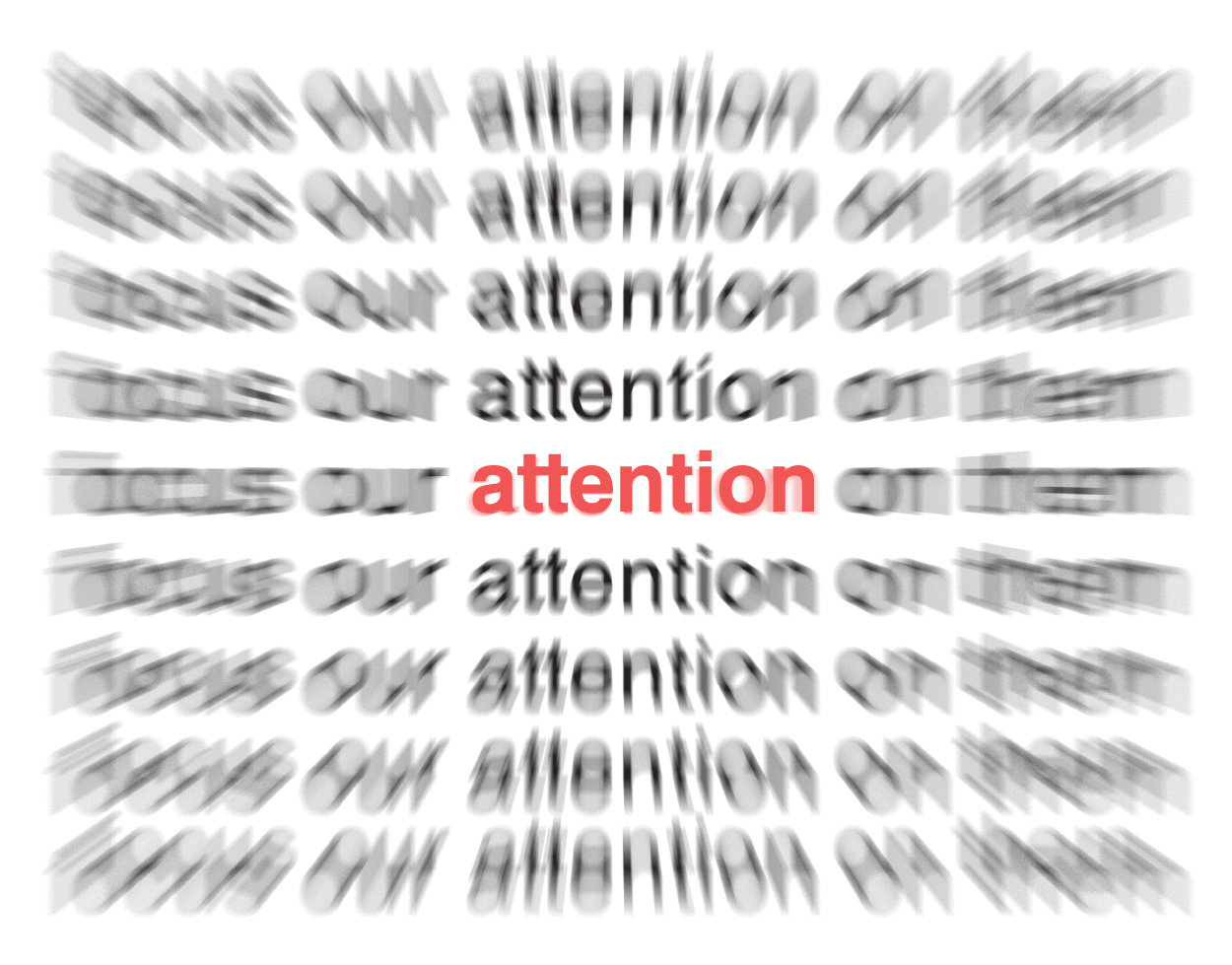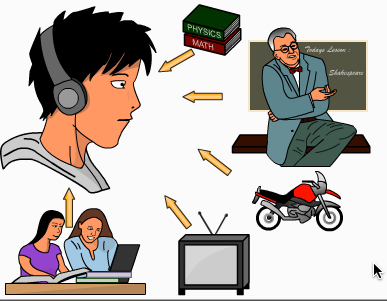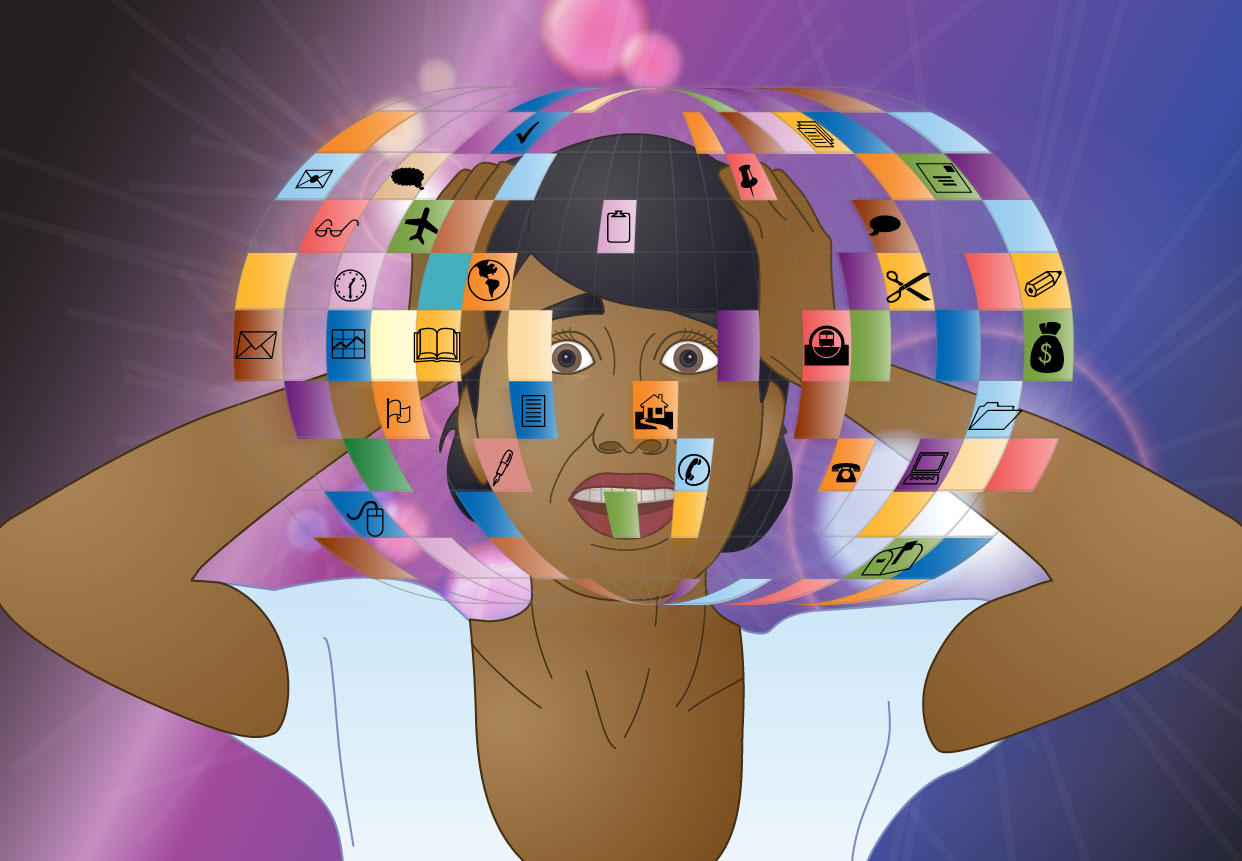Chapter 81. Selective Attention and Multitasking
Learning Objectives

Describe the principle of selective attention.
Explain how selective attention influences our perception of the events around us.
Review
Review
Select the NEXT button to continue with the Review.

1. We are constantly bombarded with more information than we can handle effectively. Our sensory systems supply the brain with millions of pieces of information every second. To make sense of that information overload, the brain's perceptual networks must focus on a small subset of this input and ignore the rest of the information.
Review
Review
Select the NEXT button to continue with the Review.

2. Selective attention is a cognitive process that allows us to concentrate on one aspect of the environment—making it the focus of our consciousness—while ignoring the rest. This works amazingly well in allowing us to zoom in on relevant information as we screen out distracting input.
Review
Review
Select the NEXT button to continue with the Review.
3. Selective attention applies to all our our sensory systems. For example, it allows us to focus on, and understand, a single conversation in a room filled with people talking (the cocktail party effect). In some cases, we can ignore the person speaking directly to us and instead pay attention to a conversation on the other side of the room.
Review
Review
Select the NEXT button to continue with the Review.
4. Occasionally, selective attention causes us to miss some important events in our environment—a phenomenon called inattentional blindness. If you have ever missed a highway exit because you were talking to someone, or had your pocket picked while watching a musical performance, you've experienced the negative side of selective attention.
Review
Review
Select the NEXT button to continue with the Review.

5. The point to remember: Having selective attention means that we are consciously aware of only a small fraction of the objects and events that surround us.
Review
Review
Select the NEXT button to continue with the Review.
6. What about multitasking? Aren’t people supposed to be able to do several things at once?
The evidence suggests that true multitasking is only possible for cognitive tasks that allow
parallel processing by different regions of the brain. For example, it’s possible to pay attention to the color of a bird and its direction of movement at the same time, because different neural networks are devoted to processing what the object is (shape and color) and where the object is (location and movement).
Review
Review
Select the NEXT button to continue with the Review.
7. Research demonstrates that true multitasking is not possible when both tasks require attention, or when both tasks utilize the same brain areas or neural networks. Many students believe that they can watch television while simultaneously carrying on a phone conversation. Rather than multitasking, they are engaged in task switching, which shifts attention rapidly between the two tasks, with some loss of information.
Practice 1: Distracted Driving
Practice 1: Distracted Driving
Select the PLAY button to see how this pattern of eye movements changes when the driver is talking on a cell phone. The animation will cycle between the views three times, which will allow you to notice the difference.
When we are driving a car, the visual environment changes constantly. Selective attention means that we don’t notice all of the changes, but instead only see the things to which we pay attention.
When some of our attention is diverted to an auditory task, such as a cell phone conversation, the result can be inattentional blindness for important visual objects, such as road signs and other vehicles.
This animation shows the eye movements of a typical driver while paying full attention to the road conditions. Each red dot represents an eye movement, as the driver glances back and forth between the mirrors, the instrument panel, and the road ahead.
Practice 2: Demonstrating Selective Attention
Practice 2: Demonstrating Selective Attention
When you are ready to begin counting, select the PLAY button to view the video clip. When you have finished viewing the entire video clip, enter your count in the box provided, and then select the SUBMIT button to check the accuracy of your count.
- Chapters
- descriptions off, selected
- captions settings, opens captions settings dialog
- captions off, selected
- English Captions
This is a modal window.
Beginning of dialog window. Escape will cancel and close the window.
End of dialog window.
This is a modal window. This modal can be closed by pressing the Escape key or activating the close button.
This is a modal window.
The video clip starts with three men wearing black shirts standing in a circle. They pass a basketball back and forth to each other, sometimes bouncing the ball or dribbling, as they run around the room. An image of three men wearing white shirts is superimposed on the screen, with them doing the same actions as the first three men. During the video a woman holding an umbrella walks across the screen from right to left.
This video clip combines two different motion sequences, with one superimposed on the other. This will create a lot of distracting information that you will need to ignore.
Your task is to focus on the players wearing black shirts. Count the number of times a black-shirted player throws the ball to another player. Ignore the players wearing white shirts.
Here is the number of passes you counted:
The actual number of passes was 20. But that wasn’t the point of this demonstration. The real question was whether you would notice a woman carrying an umbrella.
In this experiment by Ulric Neisser in the 1970s, most viewers were so focused on watching the players that they had no awareness of the woman's presence. This is called inattentional blindness.
If you were one of the typical viewers who failed to notice the woman, play the clip again. This time, focus your selective attention on searching for a woman with an umbrella, and ignore the basketball players.
Quiz 1
Quiz 1
Answer the question. Then, select the CHECK ANSWER button.

Quiz 2
Quiz 2
Answer the question. Then, Select the CHECK ANSWER button.

Conclusion
